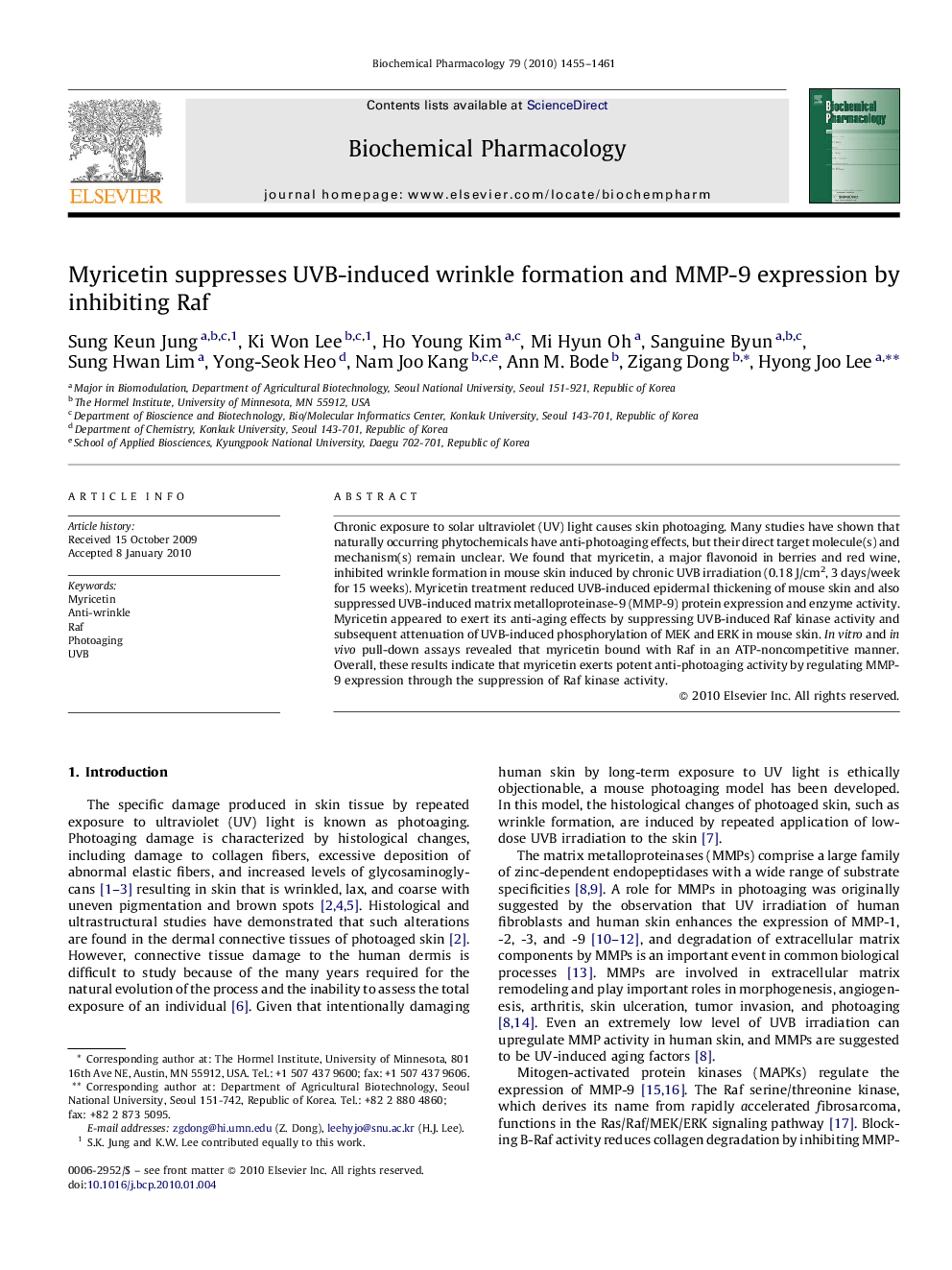| Article ID | Journal | Published Year | Pages | File Type |
|---|---|---|---|---|
| 2513651 | Biochemical Pharmacology | 2010 | 7 Pages |
Chronic exposure to solar ultraviolet (UV) light causes skin photoaging. Many studies have shown that naturally occurring phytochemicals have anti-photoaging effects, but their direct target molecule(s) and mechanism(s) remain unclear. We found that myricetin, a major flavonoid in berries and red wine, inhibited wrinkle formation in mouse skin induced by chronic UVB irradiation (0.18 J/cm2, 3 days/week for 15 weeks). Myricetin treatment reduced UVB-induced epidermal thickening of mouse skin and also suppressed UVB-induced matrix metalloproteinase-9 (MMP-9) protein expression and enzyme activity. Myricetin appeared to exert its anti-aging effects by suppressing UVB-induced Raf kinase activity and subsequent attenuation of UVB-induced phosphorylation of MEK and ERK in mouse skin. In vitro and in vivo pull-down assays revealed that myricetin bound with Raf in an ATP-noncompetitive manner. Overall, these results indicate that myricetin exerts potent anti-photoaging activity by regulating MMP-9 expression through the suppression of Raf kinase activity.
Graphical abstractMyricetin inhibited UVB-induced wrinkle formation and MMP-9 expression by directly inhibiting Raf kinase activity in mouse skin.Figure optionsDownload full-size imageDownload as PowerPoint slide
